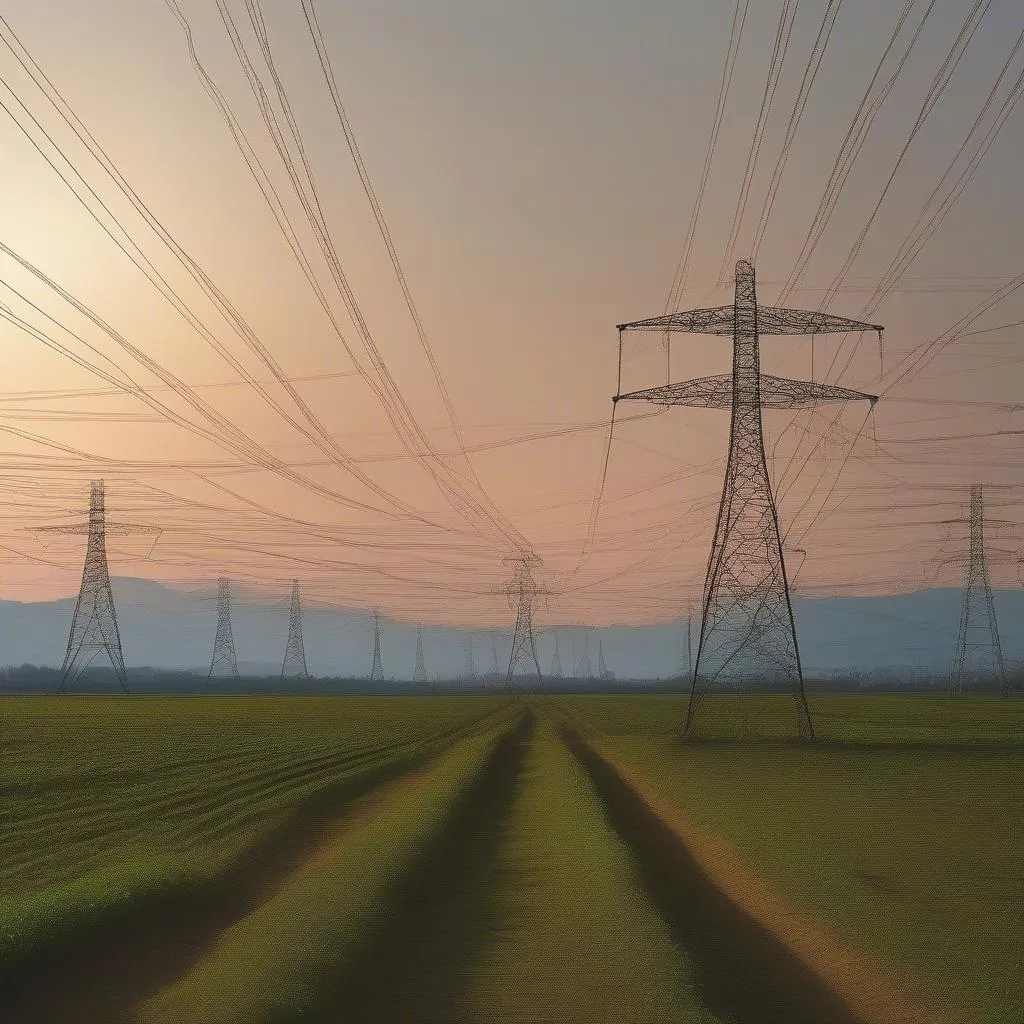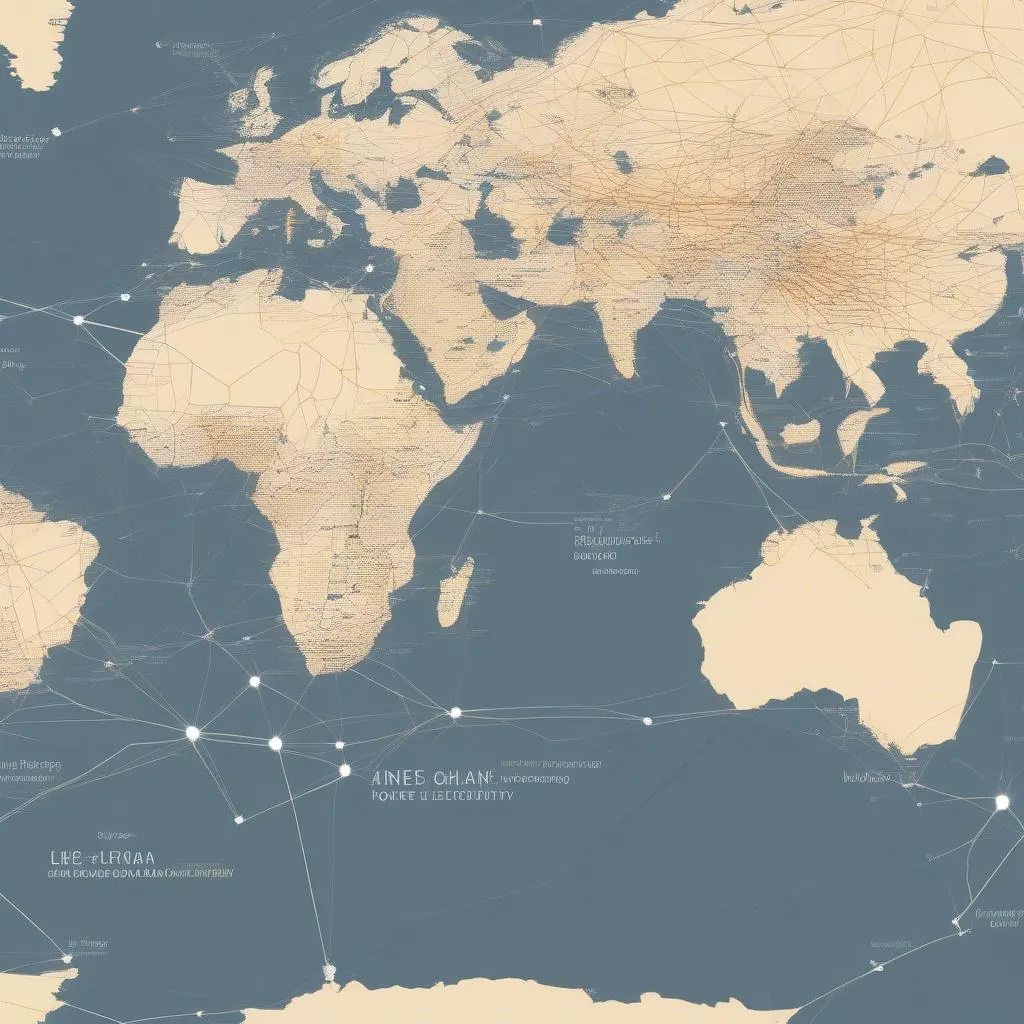Have you ever wondered, as you stood beneath the towering power lines that snake across the countryside, just how far that electricity can actually travel? It’s a question that sparks curiosity, a bit like planning a road trip and wondering how many miles you can cover. But unlike a car that needs refueling, electricity seems to defy distance, powering our homes and cities from seemingly impossible distances.
So, how far can electricity really travel? Well, buckle up, because we’re about to embark on an electrifying journey to uncover the answer!
The Science Behind Electricity’s Reach
Before we delve into the distances, let’s get a little technical (but in an exciting way!). Think of electricity like a river flowing through a pipe. The water represents the electrons, the pipe represents the electrical wire, and the force pushing the water is the voltage.
Now, just like a river encounters resistance from its banks and the riverbed, electricity faces resistance as it travels through wires. This resistance causes some of the electrical energy to be lost as heat. The longer the wire, the greater the resistance, and the more energy is lost along the way.
This is where the fascinating world of electrical grids comes into play.
Power Grids: The Highways of Electricity
To minimize energy loss and transmit electricity over long distances, we use power grids. These intricate networks act like electrical highways, using high-voltage transmission lines to transport electricity efficiently from power plants to cities and towns.
Think of these transmission lines like the autobahns of Europe, allowing electricity to travel at high speeds with minimal resistance. In the U.S., for example, these high-voltage lines can carry electricity hundreds of miles, even spanning across states!
 Transmission Lines
Transmission Lines
Factors Influencing Electricity’s Travel Distance
Several factors influence how far electricity can travel:
- Voltage: Higher voltage allows electricity to travel further with less energy loss. That’s why transmission lines use extremely high voltages, often exceeding hundreds of thousands of volts.
- Wire material: Different materials have different levels of electrical resistance. Copper, for example, is an excellent conductor and commonly used in electrical wiring.
- Wire thickness: Thicker wires offer less resistance, allowing electricity to flow more easily.
- Temperature: Higher temperatures can increase resistance in wires, potentially reducing the distance electricity can travel.
The Role of Transformers: Stepping Up and Down
Imagine you’re driving on the autobahn and need to exit into a smaller town. You wouldn’t want to navigate the narrow streets at high speed, would you? Similarly, electricity needs to be “stepped down” from high voltages to lower, safer voltages before it reaches our homes.
This is where transformers come in. These ingenious devices act like electrical gearboxes, increasing or decreasing voltage as needed.
From Power Plant to Your Living Room: A Journey Through Voltages
Let’s trace electricity’s journey from a power plant to your living room:
- Generation: At the power plant, electricity is generated at a specific voltage.
- Step-up transformer: The voltage is increased by a step-up transformer for long-distance transmission.
- Transmission lines: Electricity travels efficiently over long distances through the power grid’s high-voltage transmission lines.
- Step-down transformer: Closer to your neighborhood, a step-down transformer reduces the voltage to a safer level for local distribution.
- Your home: Finally, another transformer, often located on a utility pole, further reduces the voltage to the standard 120 volts (in the U.S.) used in most homes.
Electricity’s Travel Limits: Pushing the Boundaries
While electricity can travel vast distances, it does have limits. Factors like energy loss due to resistance and the cost of building and maintaining transmission infrastructure all play a role.
However, researchers are constantly exploring new technologies to push these boundaries even further. Superconducting materials, for instance, have the potential to revolutionize energy transmission by eliminating resistance altogether, allowing electricity to travel virtually limitless distances with no energy loss!
 Superconducting Material
Superconducting Material
FAQs: Your Electrifying Questions Answered
Q: Can electricity travel through the air?
A: Yes, but not in the same way it travels through wires. Lightning is a dramatic example of electricity traveling through the air as a powerful electrostatic discharge.
Q: How Far Can Electricity Travel in water?
A: Water, especially saltwater, is a good conductor of electricity. However, the distance electricity can travel in water depends on factors like the voltage, the salinity of the water, and the presence of any obstacles. You can learn more about how far electricity can travel in water on our sister site. [link to https://travelcar.edu.vn/how-far-can-electricity-travel-in-water/ with text “how far electricity can travel in water”]
Q: What is the longest distance electricity has traveled?
A: While pinpointing the absolute longest distance is difficult, high-voltage transmission lines can carry electricity hundreds of miles, and interconnected power grids can span entire continents!
 Interconnected Power Grids
Interconnected Power Grids
Travelcar.edu.vn: Powering Your Travel Knowledge
Just like electricity powers our world, travelcar.edu.vn aims to power your travel knowledge. We’re your go-to source for insightful articles, expert tips, and inspiring travel stories to fuel your wanderlust. Explore our site to discover hidden gems, plan unforgettable adventures, and unlock the world’s wonders, one destination at a time.
Conclusion: An Electrifying Future
So, how far can electricity travel? The answer, as you’ve discovered, is more nuanced than a simple number. From the intricate power grids that crisscross our lands to the groundbreaking technologies on the horizon, electricity’s journey is a testament to human ingenuity.
As we continue to innovate and push the boundaries of energy transmission, one thing is certain: electricity’s reach will only continue to expand, connecting our world in even more electrifying ways.